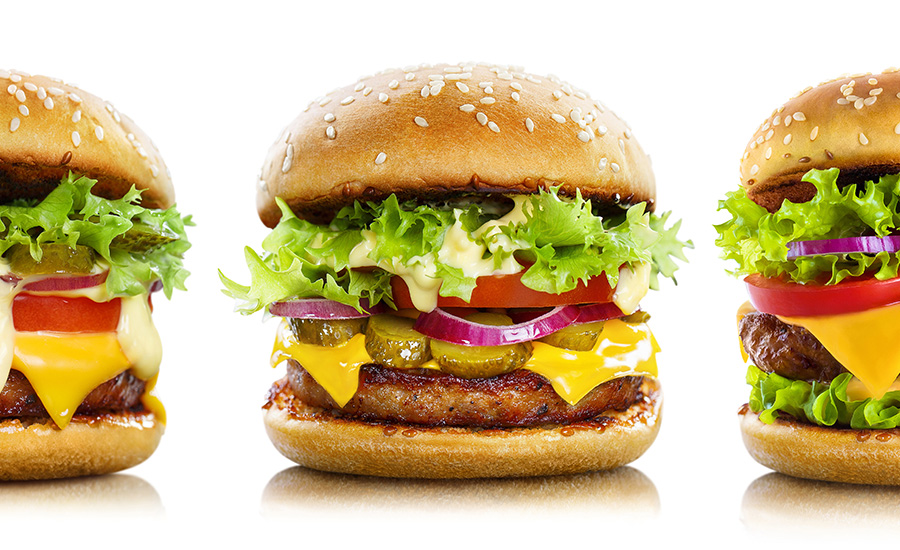You know it’s a competitive foodservice market when consumers begin to think twice about investing in a Big Mac. “We are seeing in some places resistance to pricing,” McDonald's CEO Chris Kempczinski said regarding sales during a company earnings call in April. Kempczinski noted McDonald's is seeing “pressure” due to cost-conscious customers balking at higher menu prices.
According to the National Restaurant Association, 92% of restaurant operators say the cost of food is a significant issue for their restaurant. Fortunately for the foodservice sector, consumers crave the restaurant experiences, with 84% of consumers saying that going to a restaurant with family and friends is a better use of their time than cooking and cleaning up.
While consumers still value patronizing restaurants, for quick-service as well as fast-casual restaurants rising food costs combined with inflation-fueled consumer price-sensitivity are shrinking the value gap, according to foodservice market research firm Techonomic. For many consumers, the rise of takeout food during the pandemic has led to a lasting change in the way they value fast food vs. meals from fast casual restaurants, with consumers failing to notice a meaningful distinction between burgers or chicken wings sourced from either segment when eaten at home. Technomic research suggests two-thirds of consumers say they are more likely to order takeout food from a restaurant than they were pre-pandemic. Among fine-dining restaurants that offered delivery during the pandemic, 79% added it for the first time (and eight in 10 of those plan to continue).
More than nine out of 10 (93%) restaurant operators say their restaurant’s total food costs are higher than they were in 2019. Prices are increasingly forcing to make consumers choose whether to prioritize the social and experiential aspects of on-site dining occasions against the value, convenience and perceived equal quality of takeout food consumed at home. Technomic predicts limited-service operators will focus on efforts to distinguish their brand through refreshed decor, signature menu items, enhanced loyalty programs and seamless service.
Although operators clearly have their work cut out for them, the foodservice industry is forecast to reach nearly $1 trillion ($997 billion) in sales in 2023, driven in part by rising menu prices, according to the National Restaurant Association.
Betting on burgers
Although Technomic predicts a majority of operators across all segments expect to keep their menus in 2023 similar in size to the previous year, quick-service burger chains are bullish on burgers, with many adding to their hamburger offerings this spring:
- Freddy’s (Steakburger Stacker with three steakburger patties, American and White Cheddar cheese, lettuce, tomato, pickles and Freddy's Fry Sauce)
- Culver's (Smokehouse BBQ Cheddar Pub Burger with topped sweet and smoky BBQ sauce, sharp cheddar, crispy onion rings, pickles, mayonnaise on a cheddar bun)
- White Castle (Slider Lites, with a fraction of the calories of their Original Slider)
- The Habit Burger Grill (limited-time offer Jalapeño Char, chargrilled patty topped with American cheese, jalapeño jam, house-made jalapeño mustard ,with ranch, lettuce, tomato and pickled jalapeños on a toasted brioche bun)
- Burger King took a slightly different approach, bringing back its Melts lineup of toasted sandwiches featuring two flame-grilled Whopper Jr. patties (Classic Melt, Spicy Melt and Bacon Melt).
The fast casual segment of is betting on burgers too, with TGI Fridays for one introducing its Big AF Burgers menu that combines bigger-than-ever burgers with appetizers, including:
- Buffalo Wingman Burger (which features two bone-in Buffalo wings added on top)
- Fridays Signature Whiskey-Glaze Blaze Burger (served with tender ribs coated in Fridays' Signature Whiskey-Glaze Blaze on top)
- Philly Cheesesteak Burger (including a Philly Cheesesteak Egg Roll skewered on top)
- Southwest Tornado Twists Burger (with spiral-cut Southwest Potato Twists under the bun and on the side).

New flavors
Kelly Heathington, business development director for coatings & seasonings for Kerry, said Kerry’s research found that among foodservice consumers, the number who say they prefer to order food they have tried before was down to 66% in October 2022 (down from 76%). The number of consumers reporting that they “like trying new flavors that are inspired by global cuisine’ has increased from 73% to 79%.
Kerry’s consumer research across the U.S. and Canada finds:
- 93% of consumers said they enjoy eating a variety of types of cuisine (Italian, Chinese, Mexican, etc.)
- 87% like trying new flavors with their favorite menu items
- 81% say they are always looking for new menu items to order.
Heathington said chains and brands are reinventing nostalgic classics while also looking to deliver authentic traditional tastes to foodservice favorites, including delivering more localized as well as global taste profiles.
Chef Christophe Setin, who does culinary consulting for Tyson Foods, said a foodservice opportunity for pork is offering pre-flavored and marinated cuts ready to be grilled for Korean barbecue and innovating new spice blends in line with trending Korean flavors. He said operators’ ongoing quest to find new ways to innovate and offer a new twist on classic dishes has some using proteins traditionally reserved for the dinner plate are increasingly appearing on breakfast plates. As chicken wing shortages remain challenging for operators, pork wings present a more economical alternative with room to experiment.
Adding value, cutting labor
With restaurants continuing to fight for employees, foodservice distributors are looking for ways to add value through their foodservice products lineup. US Foods Holding Corp., for one, recently launched its Spring 2023 Scoop, which features 20 labor-saving products that will help operators refresh their menus through twists on classic favorites and globally influenced flavors.
US Foods’ Spring Scoop products aim to trim at least 30 minutes of labor per case compared to making the item from scratch. Restaurant kitchens can use them as standalone stars of the plate or as ingredients for side dishes, appetizers and dressings. Globally inspired menu sensations include Chef’s Line All-Natural Pollo Asado, a classic Mexican chicken dish marinated in a blend of ancho chiles, garlic, onion, paprika, orange and lime.

.png?height=96&t=1647275041&width=96)



Report Abusive Comment